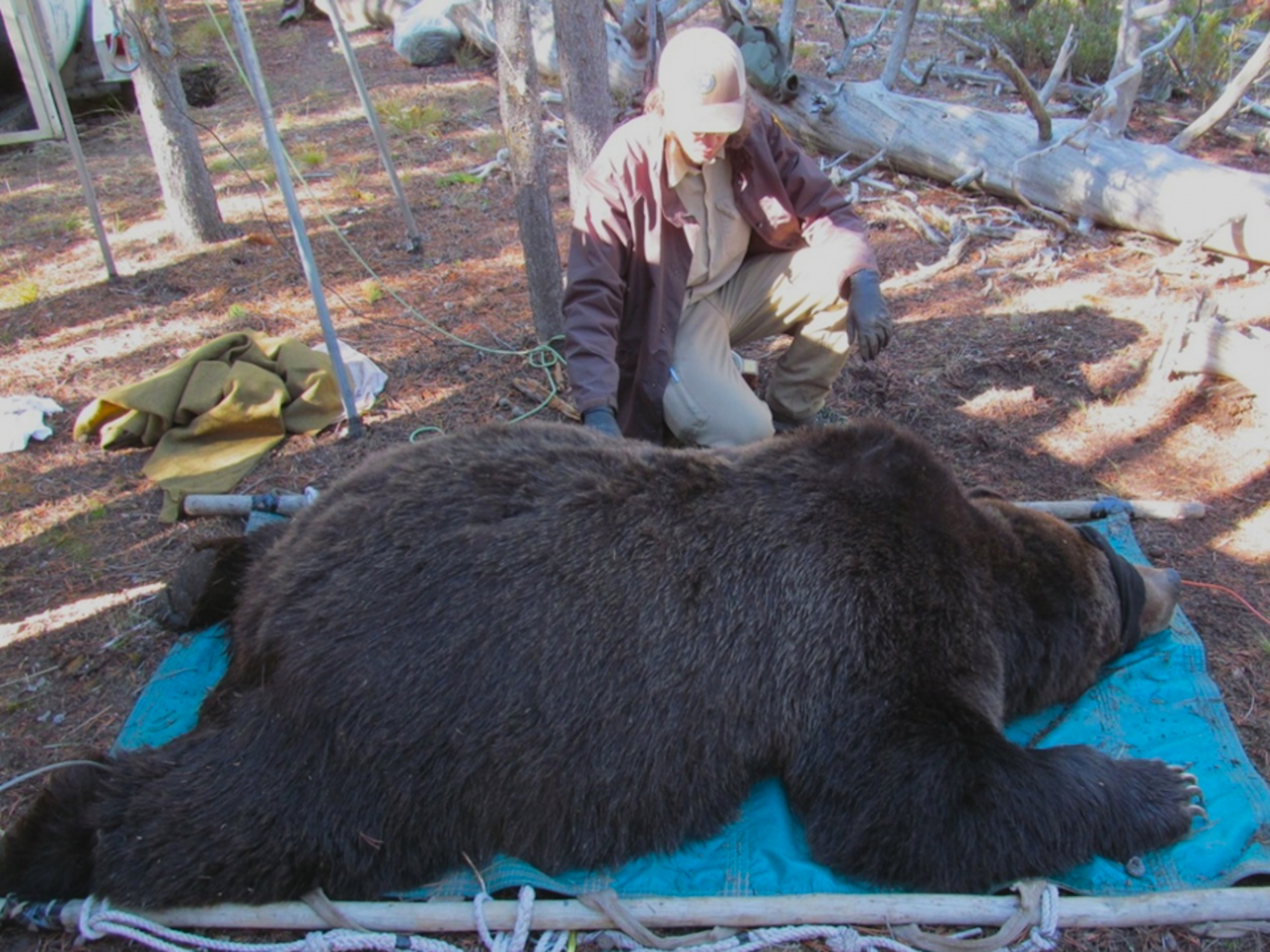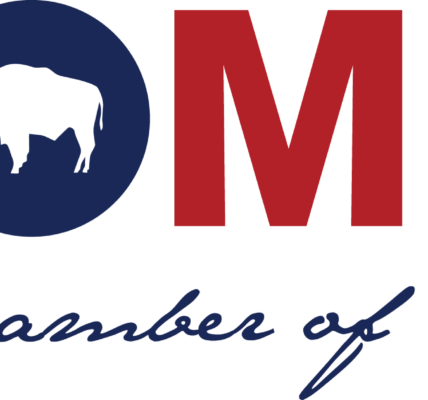
• Coming out of a verdant summer, Wyoming bears were in good shape. One grizzly tipped the scales just three pounds shy of the Greater Yellowstone Ecosystem’s top mark.
By Mike Koshmrl, WyoFile.com
Rotund, plump, hefty — go ahead and pick the fat synonym and it’ll likely aptly describe Grizzly 566, the second-heaviest grizzly bear ever documented in the Greater Yellowstone Ecosystem.
The 19-year-old male was well known to biologists in Yellowstone National Park, where the big bear resides. As a 3-year-old in 2007, he weighed in at 232 pounds. During a 2010 handling, the boar had plumped up to 393 pounds. His weight stayed in that range, registering at 381 pounds when caught and immobilized at age 9 in 2013.
Then a decade went by without Grizzly 566 coming onto biologists’ radar.
Yellowstone biologists nabbed him once more on Oct. 15 while trapping bruins for routine grizzly bear monitoring, according to Interagency Grizzly Bear Study Team leader Frank van Manen. It was the tail end of a verdant summer following a long-lasting winter in the Northern Rockies. Grizzlies in the Yellowstone region eat upwards of 266 species in four animal kingdoms, and options for foraging were evidently plentiful in 2023 — and especially so for this bruin.
Grizzly 566 weighed a whopping 712 pounds.
“You don’t come across animals of this size very often,” van Manen said.
In fact, he said, the only heavier Yellowstone-region grizzly bear ever documented was encountered all the way back in 1977. That beast of a bruin was a 715-pound male.
In some respects, Grizzly 566’s near record-breaking heft isn’t completely surprising. Male grizzly bears don’t reach their peak body size until age 14, van Manen pointed out.
Plus, a couple other grizzlies handled in 2023 had relatively high body fat percentages, he said. Ordinarily, by October, females reach 28% to 30% body fat and males are just a little bit fatter — it’s 32% or so of their fall body mass.
Boars are the fatter sex because they need extra reserves for when they emerge from the den. That’s breeding season: Males are more interested in getting to know female grizzlies than extensive eating, and they’re actually losing “quite a bit” of body mass in April and May, van Manen said.
Grizzly 566 figures to be set up well for ursine philandering come next spring.
“He had 41% body fat,” van Manen said. “It looks like the highest [body fat figure] we’ve had before was 43%.”
Were Yellowstone-region grizzlies as a population fatter than average in 2023?
Tough to say, van Manen said, though the rate of fat gain appeared “pretty much normal” this year, he said. The leanest time of year is the end of June, when grizzlies typically range from 15% to 20% body fat. Because dozens of grizzlies are captured across the ecosystem throughout each spring, summer and fall, comparing grizzly bear fat levels from one year to the next isn’t straightforward statistically.
Taking a longer view, however, the science on grizzly bear body fat is more clear. Grizzly fat accumulation rates have not changed over the decades, nor is there any correlation to population density, recent research has found.
That says a lot, van Manen said, about the remarkable plasticity of grizzly diets: Even as major food sources like whitebark pine, cutthroat trout and some ungulate populations have declined, bears are still packing it on.
“The way these animals are gaining fat from June through October hasn’t changed,” he said. “These are incredibly resourceful animals and they’re finding calories on the landscape.”
WyoFile is an independent nonprofit news organization focused on Wyoming people, places and policy.





